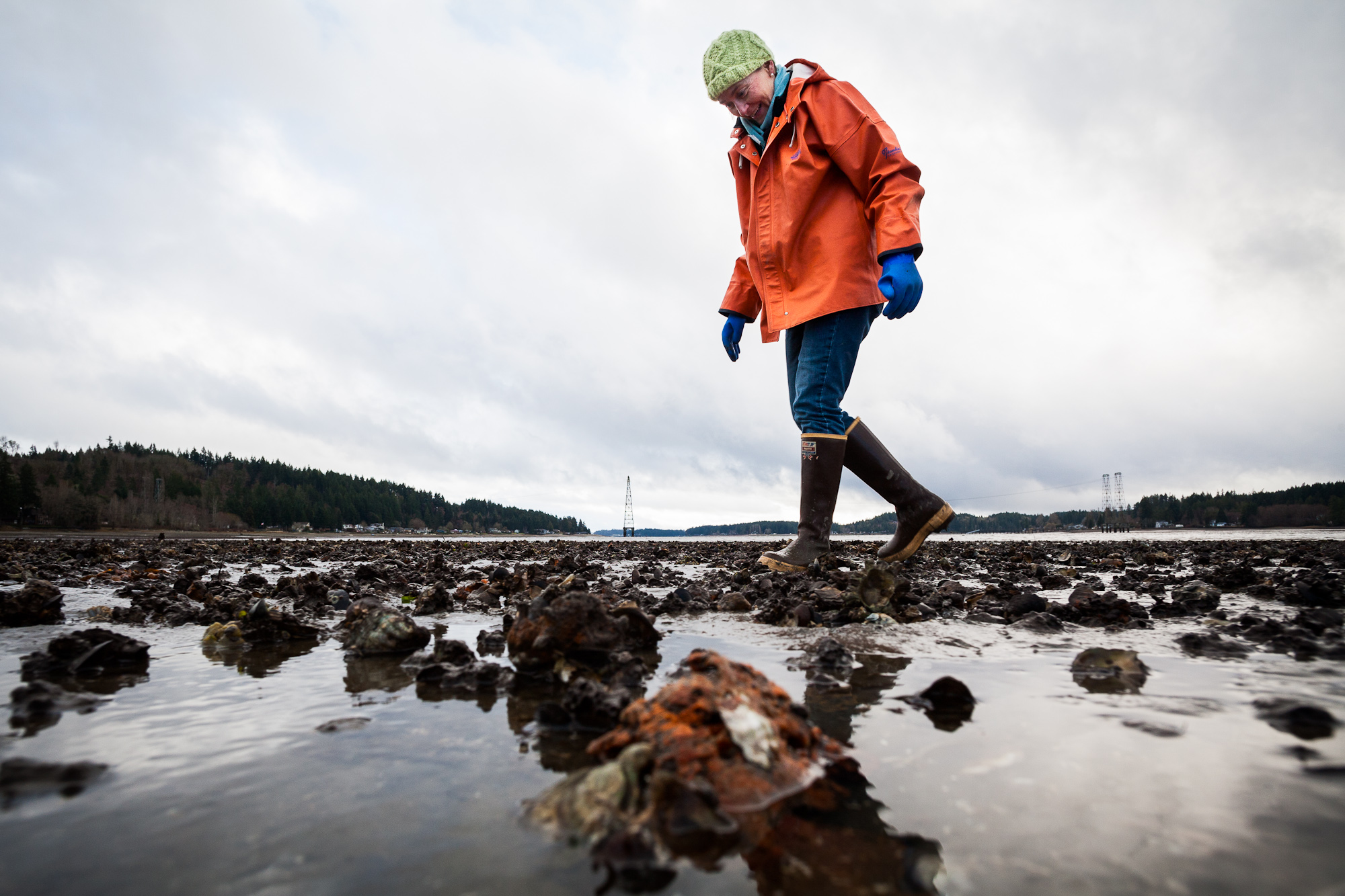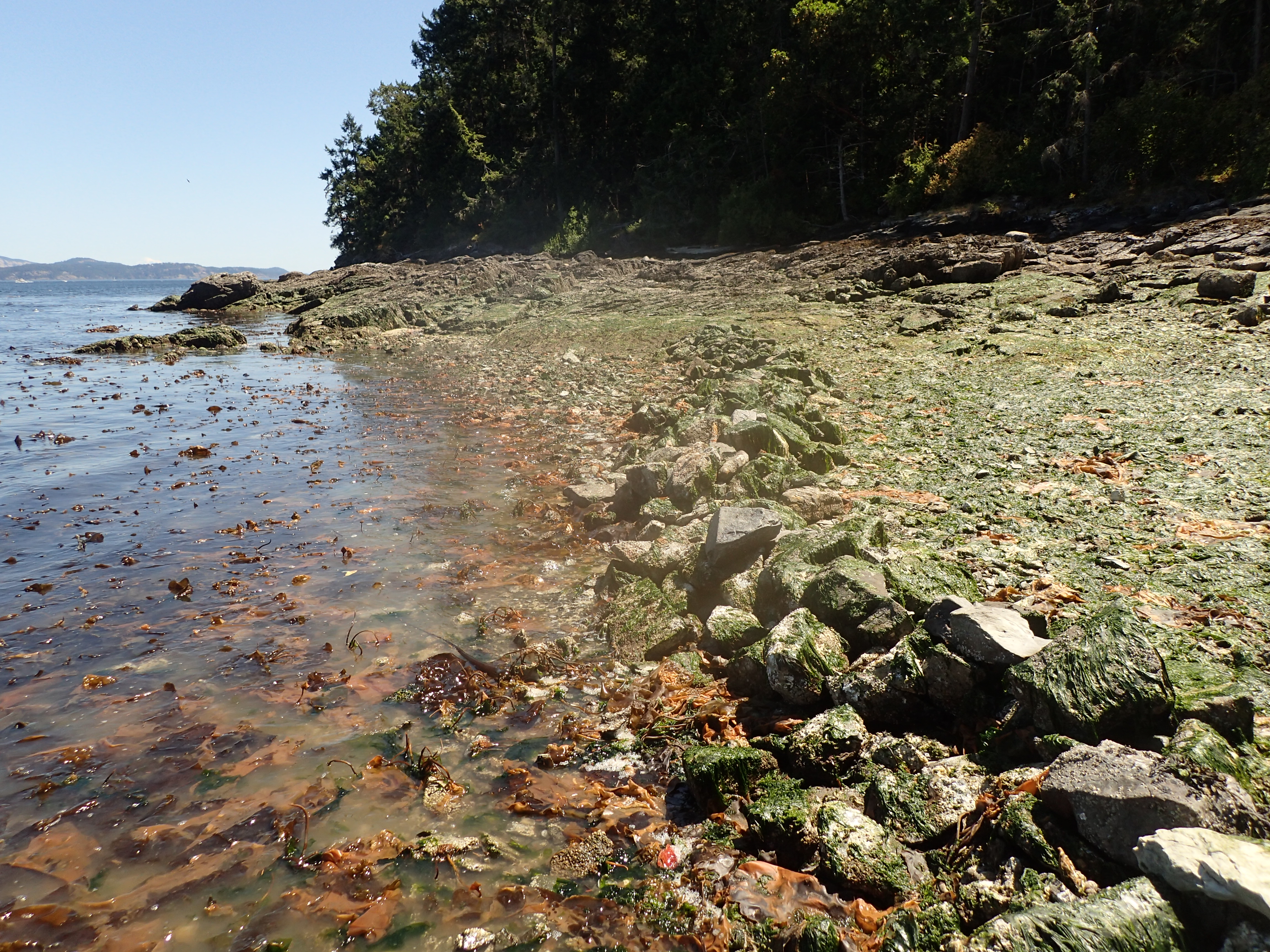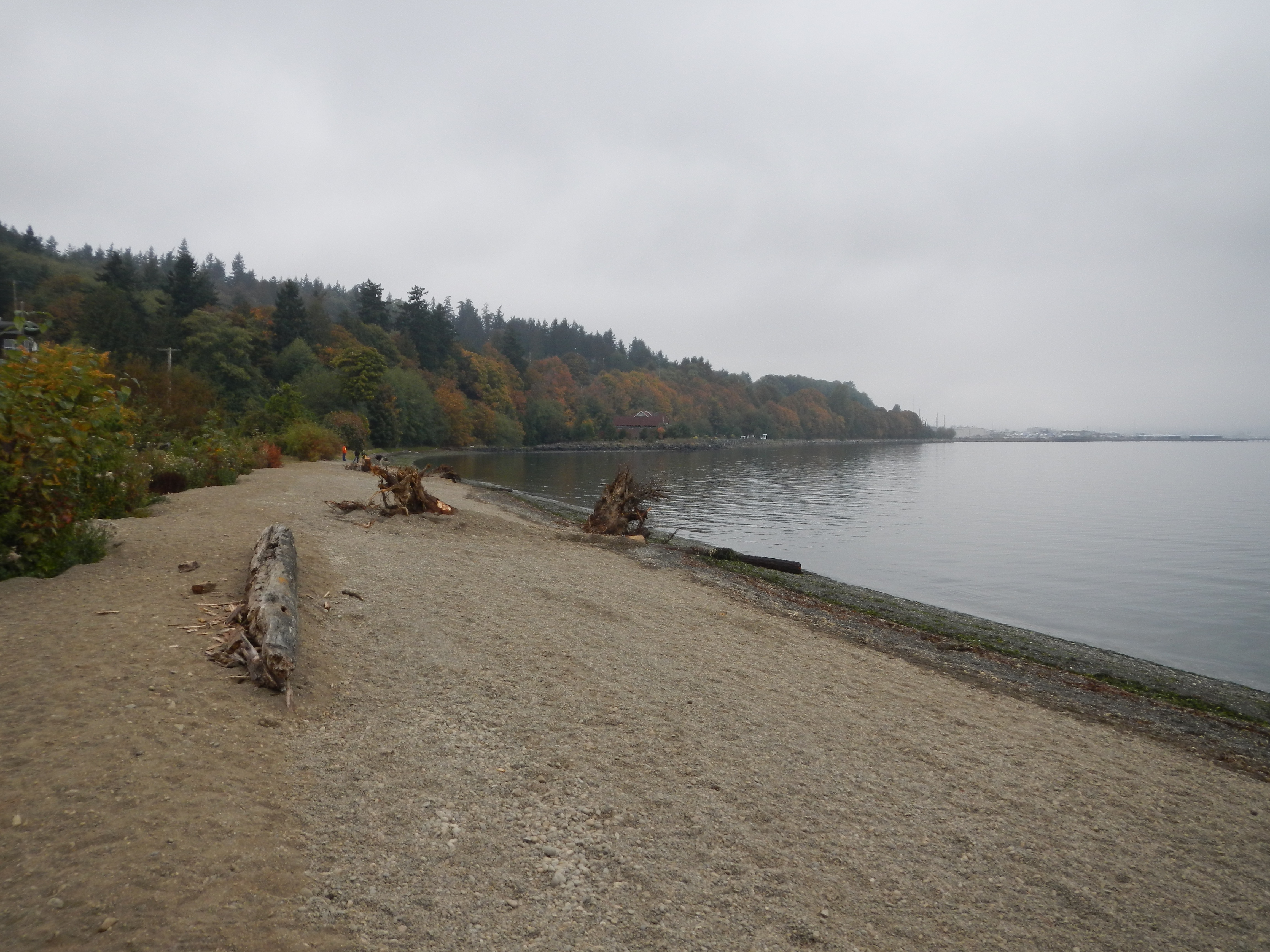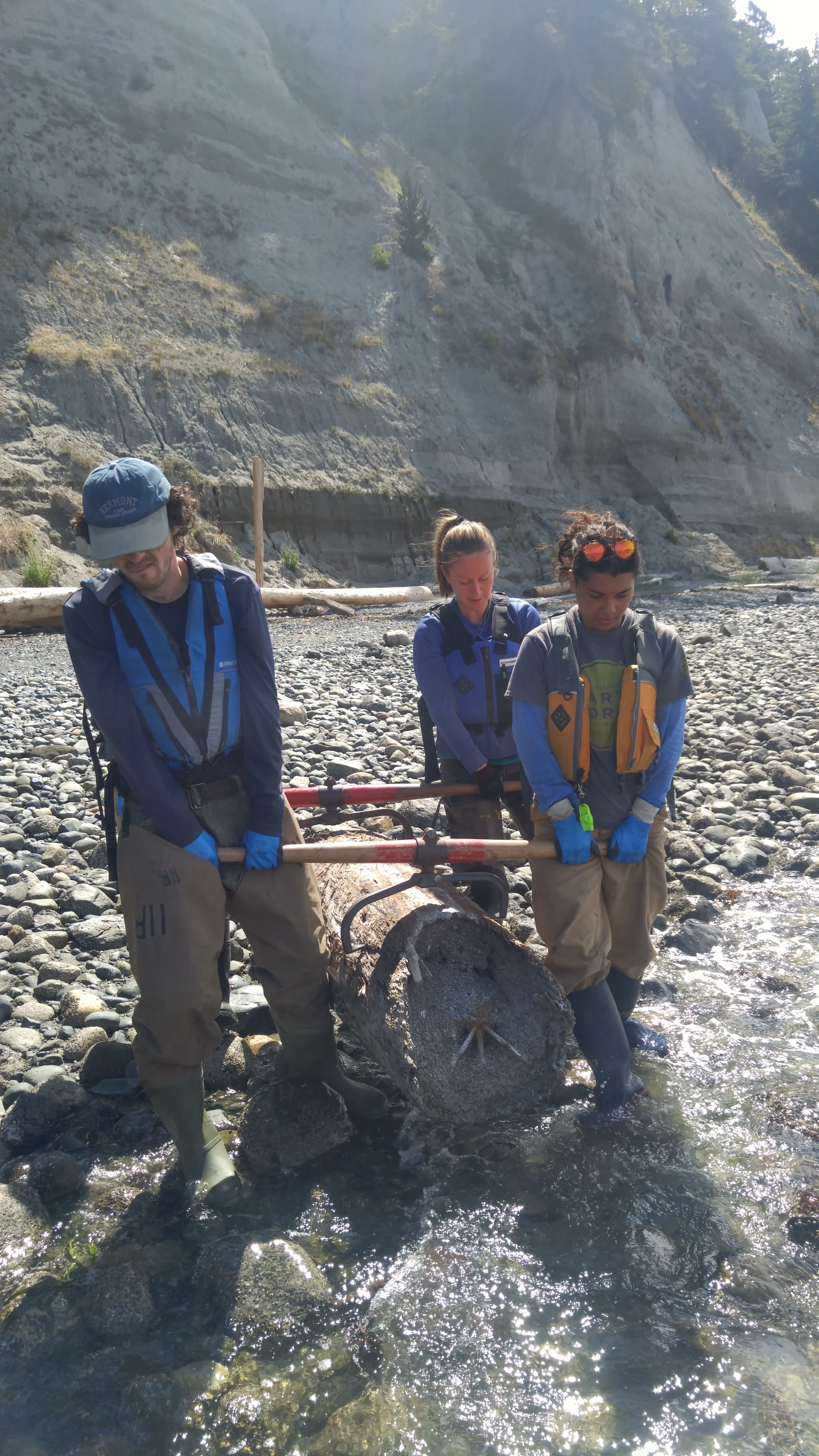Rebuilding native oyster beds and important habitat The Olympia oyster is Washington's original oyster. As our only native oyster species, they help keep our estuaries healthy by providing habitat for a diverse community of organisms. The oysters grow in aggregations,...
More than a quarter of all beaches in Puget Sound have been armored with concrete, rock, or timber to protect property. Hard armoring on shorelines limits the movement of sand and materials from bluffs along the shoreline and interferes with natural coastal processes. Shoreline armoring causes beaches to erode, degrading habitat for fish, birds, and wildlife. Once hard armor is removed and proper-sized sand is added to the beach, these projects commonly produce suitable habitat for the spawning of forage fish species like surf smelt and sand lance.
Restoration of the Pinto Abalone
Recovery of an iconic shellfish species to Puget Sound Abalone are large marine snails important to the food web. The pinto abalone is the only abalone species found in Washington waters. This native species has cultural and ecological significance, grazing rock...
March’s Point Nearshore Restoration
Rebuilding beaches for forage fish March's Point is located on the northeast opening to Fidalgo Bay in Skagit County near two oil refineries. After an oil spill at the site in 1991, a large volume of beach sand was removed as part of the clean-up. The beach continued...
Cornet Bay Nearshore Habitat Restoration
Restoring Nearshore Habitat While Improving Public Access Thousands of visitors come to Cornet Bay every year to launch boats, picnic, fish and crab. Six lanes of boat launches provide the main saltwater access from Deception Pass State Park, with as many as 800 boats...
Weaverling Spit Nearshore Habitat Restoration
Removing bulkheads to create habitat for forage fish Weaverling Spit is located on Fidalgo Bay, and is traditional homeland of the Samish people. Bulkheads made of concrete, creosote-timber, or rock piles were originally built to protect property, but the bulkhead was...
Howarth Park Nearshore Habitat Restoration
Restoring habitat for Forage Fish while Improving a City Beach Park Howarth Park is a public beach used for recreation and was the site of a large-scale restoration and beach enhancement project in 2016. Along the Everett shoreline, rock bulkheads (seawalls) protect...
Bowman Beach Nearshore Restoration
Restoring an ecosystem and providing a beach to enjoy Bowman Bay is a pocket beach located in the Whidbey Basin at Deception Pass State Park. Prior to the 1970s, a seawall was built to protect a fish hatchery that was operated at the site. The hatchery was dismantled,...
Salmon Creek Estuary Restoration
Restoring an old mill site to benefit salmon, shellfish, and people The Salmon Creek and Snow Creek estuaries are located within a half-mile from each other in Discovery Bay, forming a complex system of salt and freshwater interchange where young salmon get used to...
Maynard Nearshore Restoration
Removing defunct infrastructure to protect fish and shellfish The Maynard Nearshore Restoration Project is located at the head of Discovery Bay in Jefferson County. Salmon and Snow Creek enter the bay within a half-mile of one another forming an estuary that...
Lyre Conservation Area
CONGRESSIONAL DISTRICT: 6 LEGISLATIVE DISTRICT: 24 WRIA: 18 CITY, COUNTY: Dungeness, Clallam County Project Summary The Western Strait of Juan de Fuca, a migratory corridor for Puget Sound salmon, is characterized by small pocket estuaries and high-energy beaches. The...
Ala Spit Armor Removal
CONGRESSIONAL DISTRICT: 2 LEGISLATIVE DISTRICT: 10 WRIA: 6 CITY, COUNTY: Whidbey Island, Island County Project Summary Ala Spit, on the northeastern shore of Whidbey Island, is an important habitat for juvenile salmon and forage fish, but was damaged by...
Milwaukee Dock Eelgrass Restoration
CONGRESSIONAL DISTRICT: 06 LEGISLATIVE DISTRICT: 23 WRIA: 15 CITY, COUNTY: Bainbridge Island, Kitsap County Project Summary Long on the decline in Puget Sound, eelgrass is recognized by the Puget Sound Partnership and the Governor's Results Washington program...
Puget Sound National Coastal Wetlands Conservation
In early 2017, the U.S. Fish and Wildlife Service awarded the Washington State Department of Ecology with $4.7 million in National Coastal Wetlands Conservation grants to fund six projects to restore and protect wetlands in Puget Sound and the Grays Harbor area. The...
Seattle Elliott Bay Seawall
The Elliott Bay Seawall Project involves replacing the old seawall on Seattle's waterfront to protect buildings, roads and utilities while providing shelter for marine life. The project will construct approximately 7,112 lineal feet of seawall along the Puget Sound...
Titlow Park Shoreline Restoration Project
The Titlow Park Shoreline Restoration Project is working closely with Tacoma Metro Parks to successfully remove a derelict bulkhead, seawall, and defunct home near an important bait fish beach in Puget Sound. The second phase of the project will undertake restoration...
Chambers Bay & San Juan Islands
Chambers Bay was the site of the 2015 United States Golf Association U.S. Open tournament. Hood Canal is home to the deepest part of Puget Sound. Both are beautiful places—but herring don't care about the scenery. They come to spawn. These sites, along with...
Seahurst Park
Seahurst Park is an oasis of 152 acres of forested ocean shoreline in a very urban corridor south of Seattle. The park boasts nearly a mile of natural beach and forested cliffs as tall as 400 feet. Seawalls were built in 1972, and as a result, sand from the cliffs...
Duwamish Gardens in Tukwila
Duwamish Gardens will provide nearly an acre of shallow-water habitat for salmon, as well as a pleasant park for urban residents to enjoy. Young salmon need off-channel, shallow-water habitat, where they can feed on insects and invertebrates that live among the...























